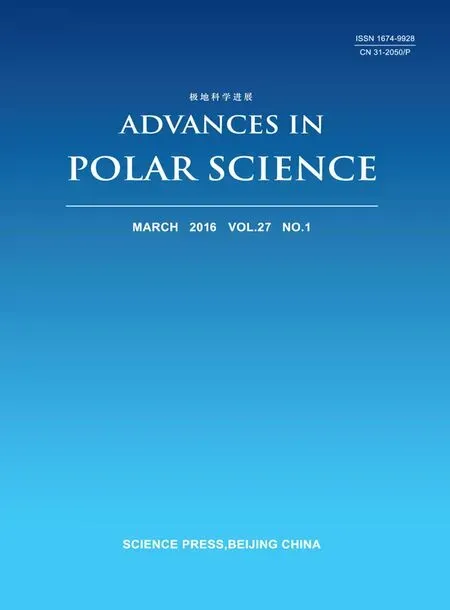Outreach channels for polar science: an expedition to Kerguelen Islands as a case study
2016-02-01EduardoDopicoEvaGarciaVazquez
Eduardo Dopico & Eva Garcia-Vazquez
1 Department of Education Sciences, Oviedo University, C/ AnicetoSela s/n. 33005 Oviedo-Asturias, Spain;
2 Department of Functional Biology, Oviedo University, C/ Julian Claveria s/n. 33006 Oviedo-Asturias, Spain
1 Introduction
It is conjectured that the Spanish navigator Gabriel de Castilla was the first to attain a high latitude in the Southern Ocean in the vicinity of Antarctica in the early seventeenth century[1].However, the first confirmed sighting of the continent was not til1 the 1820 Russian expedition of von Bellingshausen and Lazarev[2]. The British Antarctic (Southern Cross)Expedition of 1898-1900, led by the Norwegian Carsten Borchgrevink, spent the first winter on the Antarctic continent and undertook scientific observations in the area of Cape Adare, on the western side of the Ross Sea[3]. In the year 1901, designated “Antarctic Year” by the International Geographical Congress, some relevant scientific expeditions were led by Scott (Britain), Drygalski (Germany) and the Swedish geologist Otto Nordenskjöld onboard the ship Antarctic. This was one of the first comprehensive scientific missions to Antarctica. The documentary, “Atrapados en elfin del mundo. La epopeya antártica olvidada” (Caught at the end of the world. The Antarctic forgotten epic)[4], recreates that scientific adventure which sought to establish a scientific base in the Antarctic to carry out research. The story of the Norwegian explorer Amundsen is better known among the general public. Traveling in the ship Fram, he disembarked on the Ross Ice Shelf, and travelled to the South Pole,arriving on December 14, 1911. He described the historic moment in his diary: “A splendid time. Almost no wind and clear. Around 25 degrees below zero.”[5]Ever since, hundreds of expeditions from around the world have travelled thousands of kilometers to the Antarctic and Southern Ocean region with scientists and researchers to conduct field work,much of it related to climate evolution biodiversity and adaptation to extreme conditions. It was the zoologist Alfred Cort Haddon (1908) who coined the term “fieldwork”[6]to describe the work of a researcher specializing in research on natural or wild settings. On the Subantarctic Kerguelen Islands, the subject of this current study, fieldwork focuses on geodynamics, geophysics[7]; biodiversity patterns across terrestrial, limnological, glacial and marine ecosystems(http://www.institut-polaire.fr/), and many other fields.
As in other science procedures scientific fieldwork is aimed at collecting datasets on facts or events that are the subject of research interest[8]. Polar research cannot be based only on computer modelling, and satellite investigations.Researchers must carry out the fieldwork to groundtruth models and to validate hypotheses. This requires considerable investment.
Social research in polar settings has been carried out on different topics, including investigation on researchers opinions; for example, the answers of participating researchers to the key questions of their own research were the starting point for planning Arctic reindeer-caribou research[9]. In the present study we have focused on outreach and dissemination of polar research results. Scientists of the 21st century are expected to widely communicate their knowledge to inform decisions made by individuals and institutions[10]. Moreover, outreach is a duty for any scientist who works with public funds[11]. This becomes a priority in the case of polar research[12]that may otherwise be perceived as remote and expensive by the general public, especially by citizens from countries without any special interest in polar territories or who may have only slight knowledge of polar research. However, the environmental equilibrium of the entire planet depends also on the environmental status of polar areas[13]. Therefore polar research requires the participation and support of the entire global community, even if a direct benefit from polar research is not perceived in some non-polar countries. To give two examples of possible benefits: firstly,in science education we could use polar ecosystem responses to climatic variation as examples for understanding the extent and consequences of climate change with polar biota representing excellent examples for understanding adaptation.Secondly, wildlife research, properly communicated, can enhance wider community participation and interest in polar issues and provide mutual benefits for researchers and scholars. For such application in education worldwide, polar outreach is crucial. Researchers should hence know the best channels for the efficient dissemination of their discoveries.Education, outreach and communication, as well as the establishment of a global polar community[14], were subjects of attention during the International Polar Years 2007-2008[15].The main recommendation extracted from those studies is to ensure that key audiences, such as teachers and professional communicators, have the resources and networks to access relevant and current polar science information.
In this study we have investigated the preferred channels of distribution of information resulting from polar research (outreach channels) for two different groups of future professionals in education and biology from Spain,blending quantitative and qualitative data in our analysis[16].These results were compared with the outreach planned by researchers from a polar expedition to the French Antarctic Territories. This comparison served to identify mismatches between demand and supply and suggests required improvements in polar outreach for application to education and dissemination.
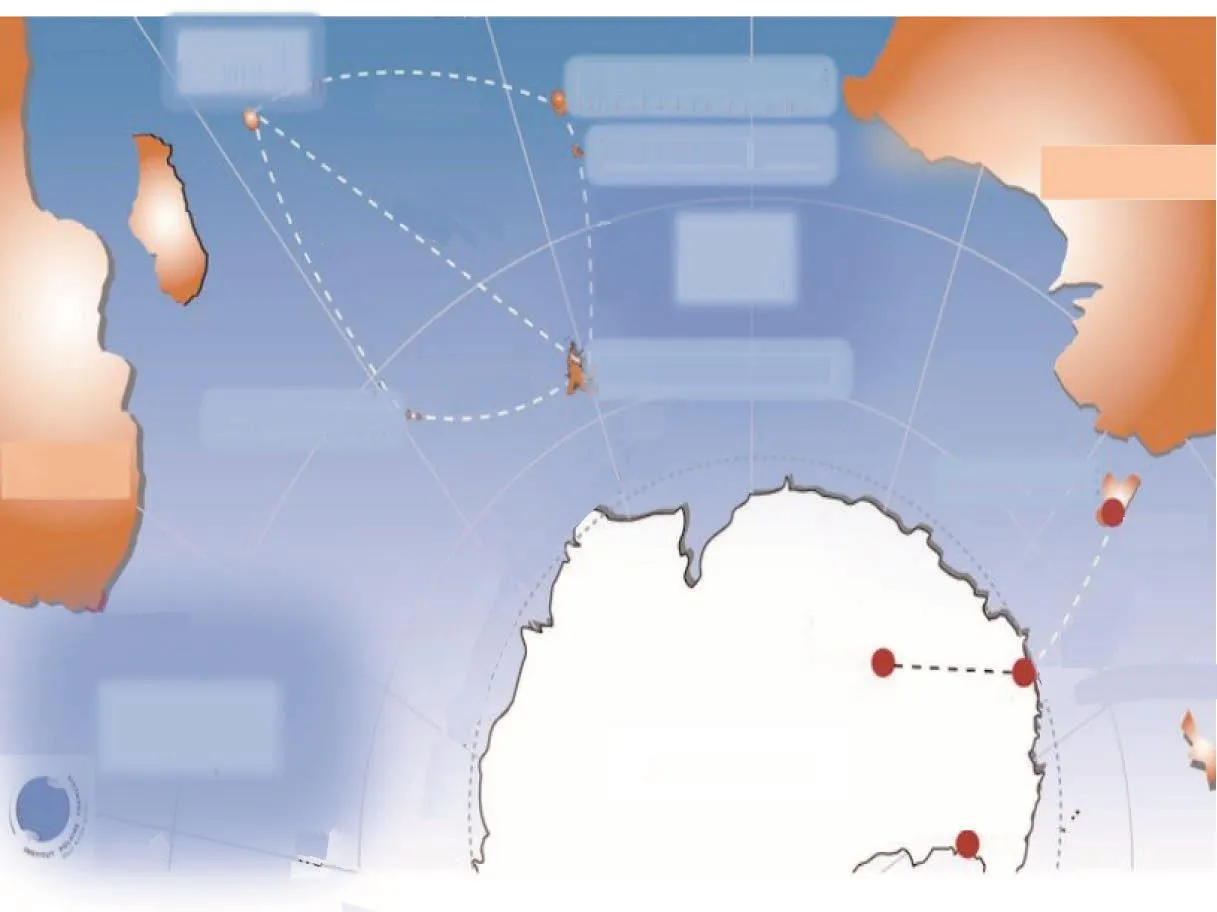
Figure 1 Map showing the location of the Kerguelen Islands. Source: Institute Polaire Paul-Emile Victor (IPEV, France).
2 Methods
2.1 Participants
Sixty polar researchers (46 males) onboard the R/V Marion Dufresne sailing across the Indian and the Southern Ocean,were interviewed during a scientific rotation from Reunion Island to the Kerguelen’s archipelago (Figure 1) and back,between 29 December 2011 and 14 March 2012. The interviews were carried out onboard and also during the time on Kerguelen. The expedition was international, with 42 French researchers and other scientists from Belgium (6),UK (5), Canada (3), Australia (1), Germany (1), Italy (1) and Spain (1). Regarding their scientific disciplines, the majority were experts in biology and oceanography. For 67% of the participants it was their first polar expedition.
In addition, 122 undergraduate university students with different backgrounds from the University of Oviedo (Spain)in the academic year 2014/2015 participated in a questionnaire survey. 89 of these students (34 males) were future primary and secondary teachers studying for the Bachelor’ s Degree in Pedagogy in the Faculty of Teacher Training and Education,and 33 were biology students (16 males). The students were asked to participate in the study during one of their normal classes, with the permission of the lecturer. Only those who volunteered remained in the classroom when the questionnaire was completed.
2.2 Approach
Following the ethical rules of a responsible research, all participants (Table 1), were informed in advance about the objectives of the research. Explicit informed consent[17]was obtained from them.

Table 1 Composition of the groups considered in this study
For the sample of researchers, an ethnographic method was employed[18], with the social scientist immersed in the researcher community onboard the R/V Marion Dufresne as a participant observer[19], and registering the implicit and explicit signals, emic-etic approach[20], around the communication of science, provided by the participants.Semi-structured interviews were conducted[21]in which a few key questions were posed[22]and new topics of interest identified and developed during the interviews[23]. The key questions, used only as a script or connecting thread to guide the informal talks between the interviewer and interviewees, are listed in Table 2. In brief, the interviews were informal conversations with short questions and no time limit for answers. Answers were recorded in writing,with the previously informed consent of respondents. Likertscale questions (question numbers 1, 2, and 3) were analysed quantitatively. Question 4 (Q4) was open-ended and posed both to researchers and students. In addition two more openended questions (Q5 and Q6) were posed only to scientists on their expected channels of scientific communication and the relative weight of scientific and public outreach in their research communication plans (Table 2).
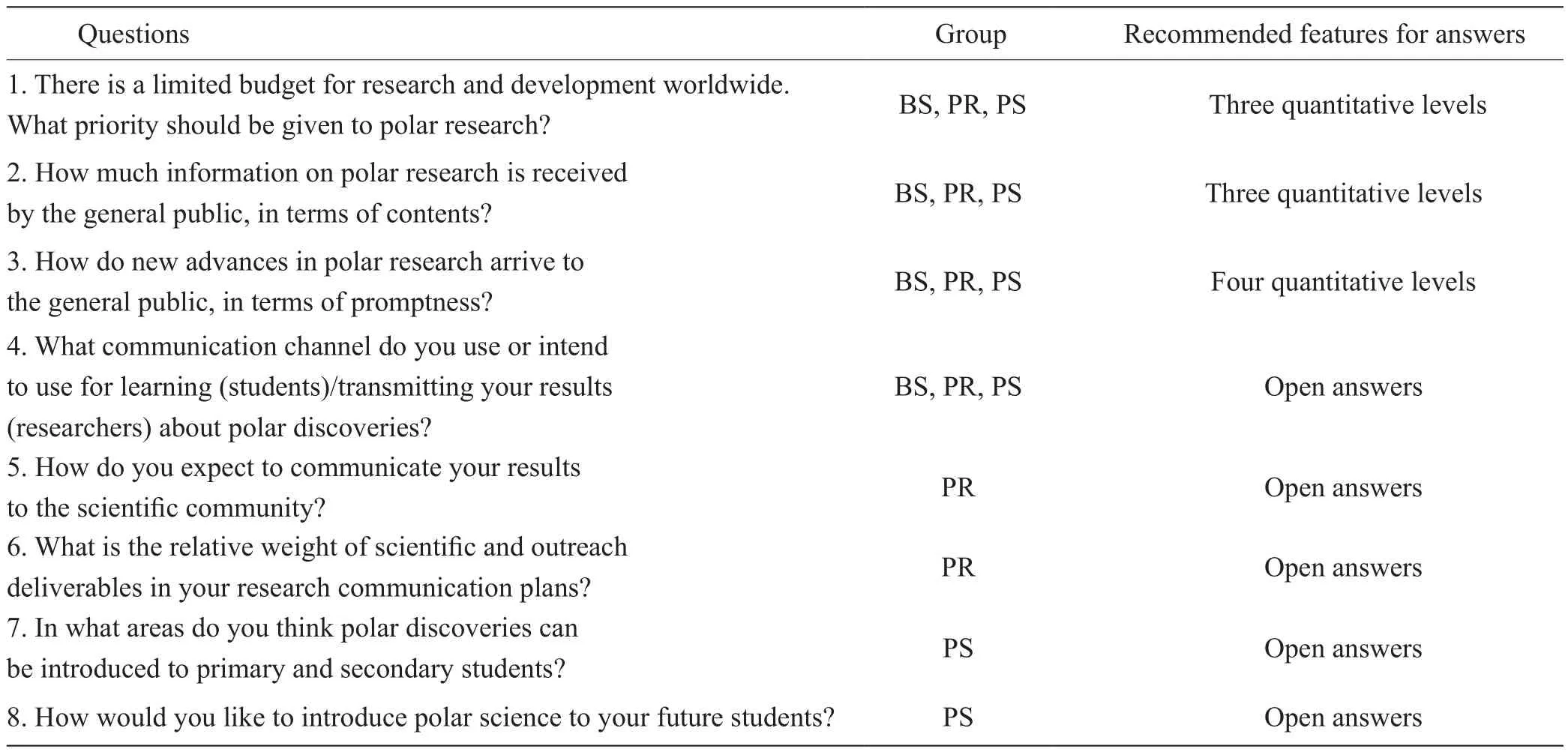
Table 2 Questions employed in this study: question, participant group and features recommended for answers. Participant groups: PR,polar researchers; BS, biology students; PS, pedagogy students
For the students, the questionnaire was similar to that for researchers. Here, instead of individually interviewing them, we carried out an informal dialog in the classrooms,providing the questionnaire to the students. We added two different open-ended questions (Q7 and Q8) about the potential use of polar discoveries in an educational context in the main disciplines where polar examples can be introduced in Primary and Secondary Education and on suggested ways of increasing the presence of polar science in the classrooms (Table 2). The questionnaire was completed in writing in the classroom with no time limit set for answers.The questionnaire was anonymous to better reぼect participants’views.
2.3 Data analysis
Our research approach resulted in both quantitative and qualitative data responding to different questions[24]within the same instrument (guiding questions). During the expedition to Kerguelen we undertook informal interviews, while in the university classrooms the questionnaire was completed in writing. The design of a mixed-method research[25]with guiding questions used to collect quantitative and qualitative information was intended to deliberately integrate both types of responses[26]making them mutually dependent in order to get a better understanding of the answers provided by researchers and students.
The questions with Likert-scale responses have only one answer per interviewee. For the open-ended questions the interviewees provide at least one answer, which is assigned a numeric value linked to the number of times in which the response appears. By this mixed method we aimed to collect a single comprehensive dataset[27]. Results are presented as the percentage of interviewees giving each answer.
Non-parametric contingency chi-square tests were employed to compare the answers between the three groups of participants. Yates’s correction for continuity was applied whenever required to prevent overestimation of statistical significance for small data. Statistical significance was set at P = 0.05.
3 Results
Polar research was considered of high or medium priority by most interviewees (Figure 2), with no statistically significant difference between the three groups (Contingency Chi-square=5.02, 2 degrees of freedom, P>0.05). The contents of polar research announced to the general public seem to be similarly perceived by the three groups (Contingency Chi-square=2.90, 2 degrees of freedom, P>0.05), with the opinion of the majority being that only main breakthroughs are needed. On the other hand, the perception about the promptness with which polar results are made known to the rest of society was significantly different between the three groups (Contingency Chi-square=43.20, 4 d.f., P<0.001). Although more than one third of the researchers thought that these results were released in a timely fashion, none of the students had the same perception. Instead, most pedagogy students (59%)believe them to be delayed. The opinion of biology students is even more negative because 90% perceived that the public release of new advances in polar research is infrequent. These results may be conditioned by the channels and methods that the students use to access information on polar investigations.
The outreach channels used by researchers did not match with the information channels used by students (Figure 3). The majority of researchers (72%) had no intention to use one of the channels mentioned by the students. The students prefer the Internet (which was not mentioned by any researcher) for getting information on polar science, followed by TV documentaries (not considered by researchers).Pedagogy students also considered scientific/scholarly journals, outreach publications and other resources (like books) as information sources to a minor extent. Biology students used only TV and the Internet to acquire information about polar science.

Figure 2 Results from the interviews.
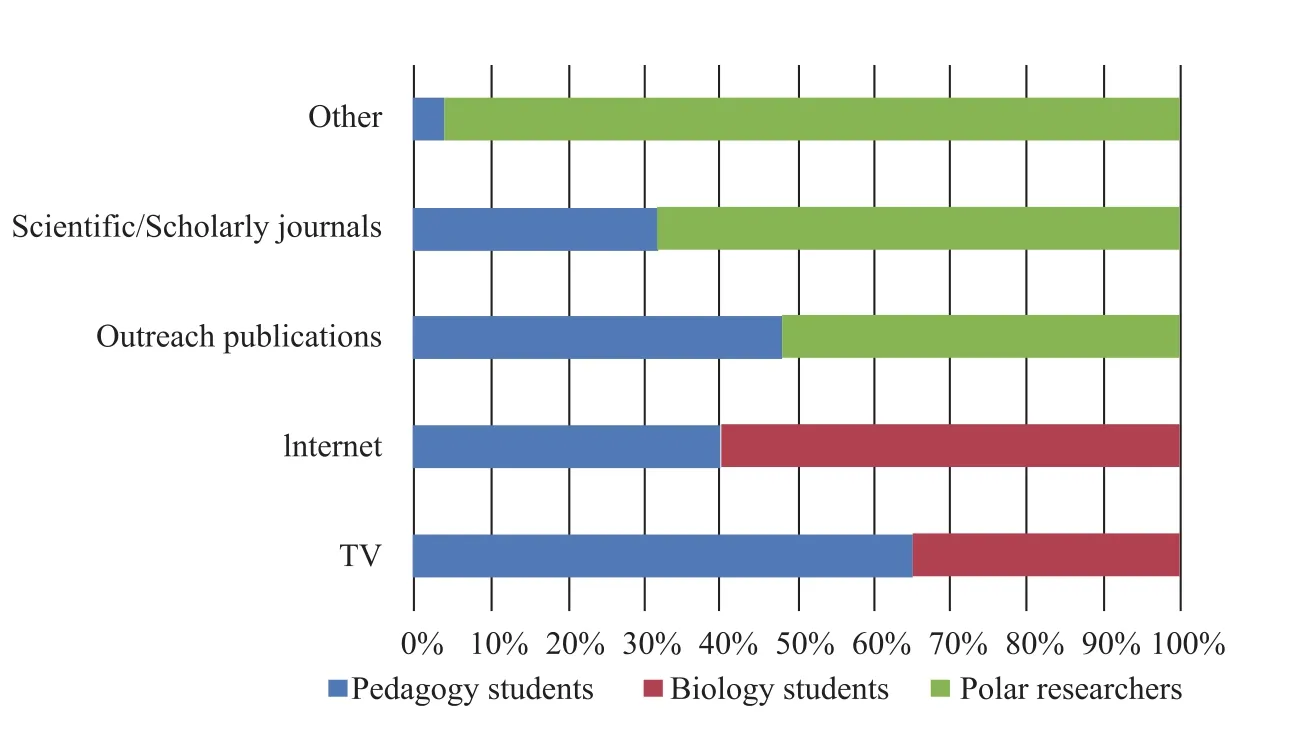
Figure 3 Outreach channels used by researchers and students.
Regarding scientific communication channels (Table 3), polar researchers expected the results of their work to be published in journals covered by the Science Citation Index(SCI). Many expected the results to feed into new projects(42%). Poster and/or oral presentations at conferences,seminars and other scientific meetings were considered by 32% researchers. For the dissemination of their work in a more accessible format and language, publication of their findings in journals such as Scientific American, National Geographic Magazine and other popular publications was an option chosen by a minority of the sample (15%). Concerning science outreach, only a few researchers intended to use their results for teaching, and all of these were at university level(13%). Accountability reports (reports to be delivered to the funding body on the use of project funds to achieve results)were mentioned as outreach by 62% of researchers. The researchers did not mention talks to the general public, visits to Primary and Secondary schools and other non-scientifically oriented actions.
Pedagogy students identified more than one discipline into which polar science could be incorporated in the curricula at Primary and Secondary Education levels(Table 4). Geology and geography were preferred, followed by biology. A few students suggested history and even literature. They also suggested some actions for improving polar science outreach to schools, such as scientists visitingschools and giving talks (96%), using more popular communication channels like TV and the Internet (close to 90%), and speeding up the spread of polar discoveries (39%).Other suggestions varied from organizing workshops about polar science for children to competitions for polar art.
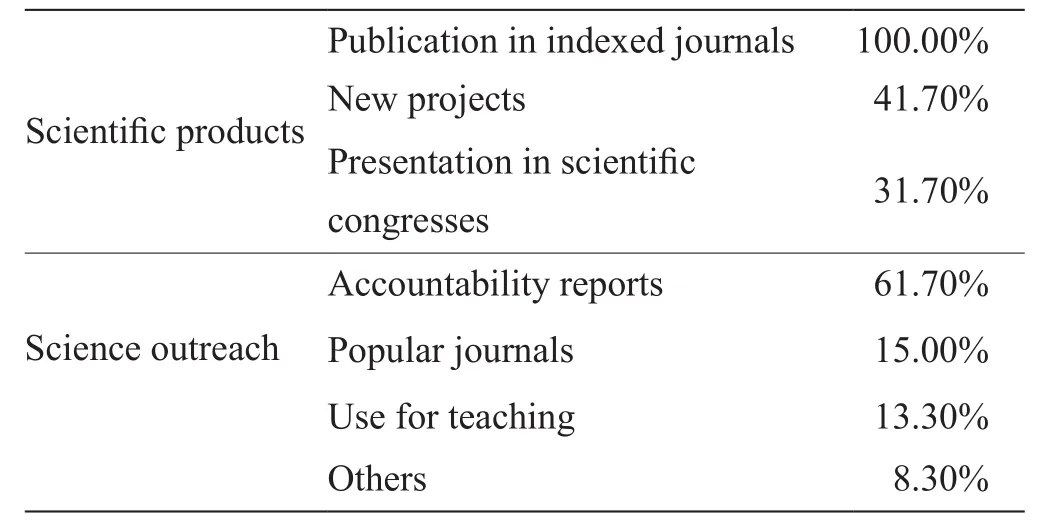
Table 3 Products of research results expected by the polar researchers interviewed, classified into scientific and outreach products
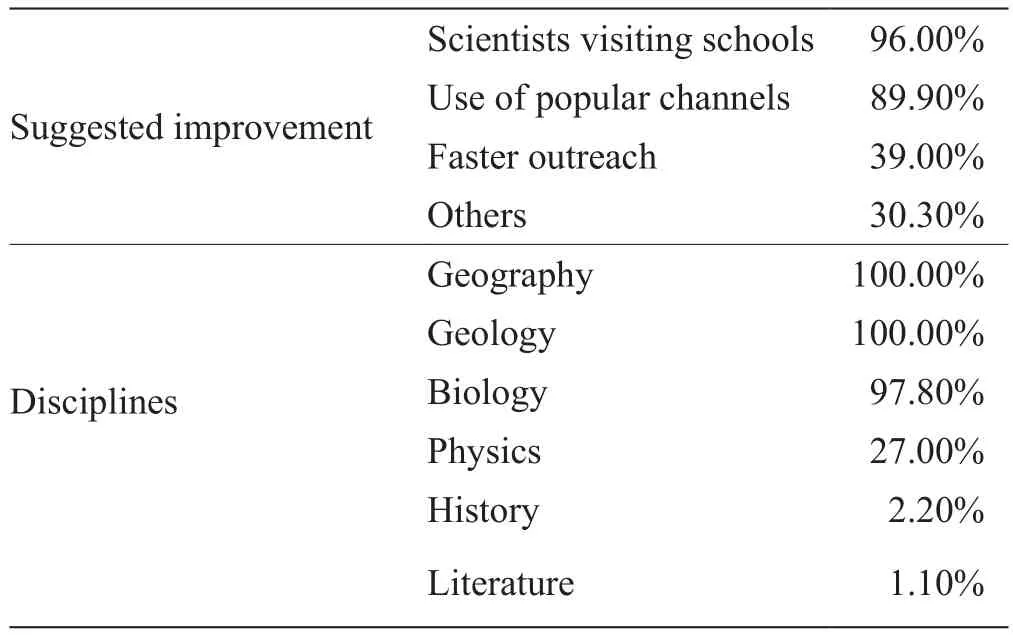
Table 4 Applications of polar science in primary and secondary education identified by the pedagogy students interviewed. Actions suggested for improving polar science outreach and those disciplines where polar science results are considered relevant for the curriculum
4 Discussion
The results, obtained through the mixed methods research[28],show the educational strategies and the modalities of science outreach followed by these three interviewed groups, each one with a different background. The polar researchers interviewed were trained in science and had engaged in different scientific outreach activities. Interviewed students are currently recipients of scientific communication in classrooms, and there are educational differences between the two groups of students: science students interact with scientific procedures and possess a prior knowledge on natural sciences, while education students, with a more descriptive and interpretive training, are not exposed to detailed experimental methodology. These curricular differences were taken into account when analyzing science outreach channels; obviously, other comparative groups may produce different results. This underlines the need for scientific research in any curriculum. Scientific communication is a key part of the research[29]and it is desirable the students learn how to communicate research results to wide audiences.
Our data analysis reveals that the expectations of researchers and the general public for polar science outreach do not always match. Future teachers offered some thoughts on how polar science could be better presented in schools.Their comments refer to how they currently access scientific information. Essentially, their link with dissemination of scientific information is established in the classrooms by means of discursive teaching sessions[30]with their teachers,and access to recommended articles and books. In the case of polar science, their previous knowledge was from documentaries seen on television, biographies and travel stories. Our results can help improve polar science outreach strategies, which are much needed for supporting polar research. For example, nowadays the Internet is the most common communication channel for spreading information to the public. However, the World Wide Web has different uses and meanings for researchers and students. While researchers envisage the “web” as an outreach channel through publications indexed to online scientific journals and repositories of science communication, for students the Internet is a virtual world where you can find everything,from the banal to the most elaborated. In this sense, to instruct students on the contents stored on the web and help them to develop the critical competency of reflective analysis on the information contained therein seems an urgent task for teachers. In any case, increasing the dissemination of polar science results via the Internet would reach wider sectors of the general public and would contribute to support for polar studies. Future teachers also indicated the possibility of incorporating polar science into education curricula in various disciplines. Taking into account the profile of the interviewed participants/students, this is good news for polar research.
Other information obtained in this study deserves further comments. First, the composition of the group of polar researchers revealed a biased sex ratio, with more males than females (77% versus 23% respectively). The ratio of females involved in polar research activities has traditionally been very small[31]and only recently has the gender balance started to be corrected in polar studies[32]. The smaller numbers of women who orient their professional careers to scientific research[33]logically affect the gender balance in science outreach. The scientific environment, like society, also reproduces gender inequality[34]. However, the gender bias was reversed among the students participating in this study,with more females than males (59% versus 41%). This could be a sign of an ongoing change towards a gender-balanced future in scientific research.
Scientific communication and the opportunity of establishing collaboration for future projects were expected products of polar research for the interviewed scientists.However, researchers were more interested in scientific publications than in public outreach. The pressure to publish in highly rated scientific journals is enormous and affects all knowledge areas. Interestingly, bias in funding for some research topics caused by publications in high-impact journals has been reported in other fields, like human health,where such bias can lead to dissemination of questionable knowledge, and the use of lax research guidelines or barely meaningful teaching practices[35]. It is also surprising that accountability reports could be considered as a sort of outreach; the delivery of research reports to funding agencies cannot be properly regarded as science outreach.
Some observations made by the interviewed researchers about the communication of research results were difficult to categorize for statistical analysis. They were part of informal conversations around the proposed topics and were mentioned by at least one third of the interviewees. Three main issues were identified. One was the Anglophone bias of scientific research: English was perceived as the lingua franca of science for high-impact journals. Second, researchers doubted that the scientific quality of published articles was really associated with the impact of indexed journals; they named examples of good scientific articles that had been published in journals that were not in the highest quartile while others,which had been published in any of the top-ten journals, had been subsequently withdrawn because they had significantぼaws. Finally, interviewees recognized that scientific outreach was not a priority for them because only indexed scientific journals are considered worthwhile research outputs in modern science. All researchers were sure that if they did not publish their work in SCI/SSCI journals their results would have no scientific impact, thus reducing their chances in national and international calls for research projects.
The researchers that declared their intention of using education-oriented outreach channels (for example, preparing teaching materials and giving talks for the general public)also said that these activities are irrelevant to their careers.This is in contrast to the desire of future teachers who wanted an active presence of researchers in classrooms (Table 4).Students who participated in our study valued positively the work of scientists and demanded a stronger link between research results and school programs. Russo[11]suggested that researchers were afraid of publicizing their results in popular media because they might be perceived as “low key” scientists. Preparation of outreach strategies has seldom been a part of scientific training programs[36], but this should change. Public demand for funding polar research will be encouraged if citizens are well informed about the results of the already funded projects, and their potential impact on the future wellbeing of the planet[37]. Funds are necessary to undertake polar science, and the importance of such research,which most often requires international cooperation, besides being measured by high-impact publications, patents or discoveries about the global system of the planet and its ecosystems, should also be assessed by its social value to humans and to long-term sustainability.
5 Conclusions
More research on modern outreach channels for polar studies is necessary. As stated by future teachers, polar discoveries could be perfect for explaining science to young students at primary and secondary education levels: the adventure of polar research is very attractive to the youth. Unfortunately,these future teachers who participated in our study, also perceive that polar science is absent from scholarly curricula in their country (Spain). Fortunately, they have the Internet as an important source of knowledge, a commonplace resource in our current educational times, and different types of articles that explain polar science can be found there.Researchers also use digital resources to disseminate their research through online journals; in fact, this is the channel preferred by young polar researchers[38]. Nevertheless, it is necessary to underline the need expressed by the interviewed students that teachers and researchers should share educational spaces, with researchers sharing with students the work and results of their polar research and thus contributing to science outreach and to science education
As a final remark, our study provides a key answer on the motivations of humans for polar research: curiosity.All consulted polar researchers repeated this word in all the interviews. From the first pioneers to the present days,polar expeditions are a challenge in extreme environmental conditions. A motivation for polar research may be the need to face new global environmental changes, but this is not the only one; another explanation to the question of why scientists embark on polar trips could be the last shot of Werner Herzog’s film[39]Encounters at the end of the world:a penguin leaves the colony and just takes a walk towards the unknown.
AcknowledgementsWe thank the passengers and crew of the R/V Marion Dufresne and especially Julien Temblay and Jean-Christophe Aymes. This study was supported by SALMEVOL (Salmonid Evolution; ref.1041). We also thank Jacques Labonne from the Pôle of Hydrobiology in Saint-Péesur-Nivelle (Aquitaine-France), and the students of Oviedo University.
1 Putzke J, Pereira A B. The Antarctic mosses with special reference to the South Shetland Islands. Brazil: Editora da Ulbra, 2001
2 Bulkeley R. Bellingshausen and the Russian Antarctic expedition,1819-21. New York: Palgrave Macmillan, 2014
3 Antarctic Heritage Trust. Borchgrevink’sHut, Cape Adare. http://www.nzaht.org/AHT/HistoryCapeAdare/, 2016
4 Sánchez E. Atrapados en el fin del mundo. La epopeya Antártica olvidada (Caught in the end of the world. The Antarctic forgotten epic). Argentina: Digiart Producciones, 2003
5 Amundsen R. My life as an explorer. New York: Amberley Publishing, 2009
6 Haddon A C. The study of man. London: Murray, 1908
7 Amicale des Missions Australeset Polaires Françaises. AMAPOF Mémoire à plusieurs voix, 50 ans de souvenirs polaires(Remembrances with many voices. 50 years of polar memories),Tome 2. France: Editions Amapof, 2008
8 Maw S J, Mauchline A L, Park J R. Biological fieldwork provision in higher education. Biosci Ed, 2011, 17(1): 1-14, doi: 10.3108/beej.17.1
9 Kofinas G, Osherenko G, Klein D, et al. Research planning in the face of change: the human role in reindeer/caribou systems. Polar Res,2000, 19(1): 3–21
10 Lubchenco J. Entering the century of the environment: a new social contract for science. Science, 1998, 279(5350): 491–497
11 Russo G. Outreach: meet the press. Nature, 2010, 468(7322): 465–467, doi: 10.1038/nj7322-465a
12 Cheek J, Huyge B, de Pomereu J. Princess Elisabeth Antarctica: an International Polar Year outreach and media success story. Polar Res,2011, 30: 11153, doi: 10.3402/polar.v30i0.11153
13 Parmentier F J W, Christensen T R, Sørensen L L, et al. The impact of lower sea-ice extent on Arctic greenhouse-gas exchange. Nat Climate Change, 2013, 3(3): 195–202, doi: 10.1038/nclimate1784
14 Salmon R A, Carlson D J, Zicus S, et al. Education, outreach and communication during the International Polar Year 2007-2008:stimulating a global polar community. Polar J, 2011, 1(2): 265–85,doi: 10.1080/2154896X.2011.626629
15 Provencher J, Baeseman J, Carlson D, et al. Polar research education,outreach and communication during the fourth IPY: how the 2007-2008 International Polar Year has contributed to the future of education, outreach and communication. Paris: International Council for Science (ICSU), 2011
16 Auer-Srnka K J, Koeszegi S T. From words to numbers: how to transform qualitative data into meaningful quantitative results.Schmalenbach Bus Rev, 2007, 59(1): 29–57
17 Cooper J, Lewis R, Urquhart C. Using participant or non-participant observation to explain information behaviour. Inform Res, 2015, 9(4):184
18 Anderson L. Analytic autoethnography. J Contemp Ethnogr, 2006,35(4): 373–395
19 Taylor S J, Bogdan R. Introduction to qualitative research methods:the search for meanings. New York: John Wiley & Sons, Inc, 1984
20 Xia J F. An anthropological emic-etic perspective on open access practices.J Document, 2011, 67(1): 75–94, doi: 10.1108/00220411111105461
21 Ellis C. Telling secrets, revealing lives: relational ethics in research with intimate others. Qual Inq, 2010, 13(1): 3–29
22 Mckernan J. Curriculum action research: a handbook of methods and resources for the reflective practitioner, 2nd edn. UK: Routledge,1996
23 Yin R K. Case study research. Design and methods, 3rd edn.Thousand Oaks: Sage Publications, 2003
24 Bryman A. Integrating quantitative and qualitative research: how is it done? Qual Res, 2006, 6(1): 97–113, doi: 10.1177/1468794106058877
25 Henry D, Dymnicki A B, Mohatt N, et al. Clustering methods with qualitative data: a mixed-methods approach for prevention research with small samples. Prevent Sci, 2015, 16(7): 1007–1116, doi:10.1007/s11121-015-0561-z
26 Maxwell J A. Expanding the history and range of mixed methods research. J Mixed Methods Res, 2016, 10(1): 12–27, doi:10.1177/1558689815571132
27 Driscoll D L, Appiah-Yeboah A, Salib P, et al. Merging qualitative and quantitative data in mixed methods research: how to and why not.Ecological and Environmental Anthropology. http://digitalcommons.unl.edu/icwdmeea/18, 2007
28 Shannon-Baker P. Making paradigms meaningful in mixed methods research. J Mixed Methods Res, 2015, 20, doi:10.1177/1558689815575861
29 Jucan M S, Jucan C N. The power of science communication.Proc Social Behav Sci, 2014, 149: 461–466,doi: 10.1016/j.sbspro.2014.08.288
30 Oh P S. Discursive roles of the teacher during class sessions for students presenting their science investigations. Int J Sci Ed, 2005,27(15): 1825–1851, doi: 10.1080/09500690500239714
31 Rasmussen R O. Gender and generation: perspectives on ongoing social and environmental changes in the Arctic. Signs, 2009, 34(3):524–532
32 Natalia K. Climate change effects on human health in a gender perspective: some trends in Arctic research. Global Health Action,2011, 4: 7913, doi: 10.3402/gha.v4i0.7913
33 Ecklund E H, James S A, Lincoln A E. How academic biologists and physicists view science outreach. PLoS One, 2012, 7(5): e36240, doi:10.1371/journal.pone.0036240
34 Knobloch-Westerwick S, Glynn C J, Huge M. The Matilda effect in science communication: an experiment on gender bias in publication quality perceptions and collaboration interest. Sci Commun, 2013,35(5): 603–625, doi: 10.1177/1075547012472684
35 Joober R, Schmitz N, Annable L, et al. Publication bias: what are the challenges and can they be overcome? J Psychiatry Neurosci, 2012,37(3): 149–152
36 Leshner A I. Outreach training needed. Science, 2007, 315(5809):161, doi: 10.1126/science.1138712
37 Steiner A. Why “Melting Ice” as a topic for the World Environment Day? Polar Res, 2007, 26(2): 93–95, doi: 10.1111/j.1751-8369.2007.00034.x
38 May I, Carlson D, Ardyna M, et al. Making science animations: new possibilities for making science accessible to the public. Polar Res,2011, 30: 15315, doi: 10.3402/polar.v30i0.15315
39 Herzog W. Encounters at the end of the world. Think Film: Henry Kaiser Production, 2007
杂志排行
Advances in Polar Science的其它文章
- Norwegian contributions to Arctic environmental sciences from the 1880s to the third International Polar Year
- Meteorite classification for building the Chinese Antarctic Meteorite Depository—Introduction of the classification of 500 Grove Mountains meteorites
- Biodiversity and phylogenetic analysis of the gut microbiome of Euphausia superba Dana from the Rose Sea of the Antarctic Ocean
- Structure and seasonal variability of fronts in the Southeast Indian Ocean along sections from Fremantle, Australia to Antarctic Zhongshan Station
- Potential methane production rates and its carbon isotopic composition from ornithogenic tundra soils in coastal Antarctic
- Expression analysis of heat-shock protein gene Hsp845 in the Antarctic psychrotrophic bacterium Psychrobacter sp. G under temperature and salinity stress
